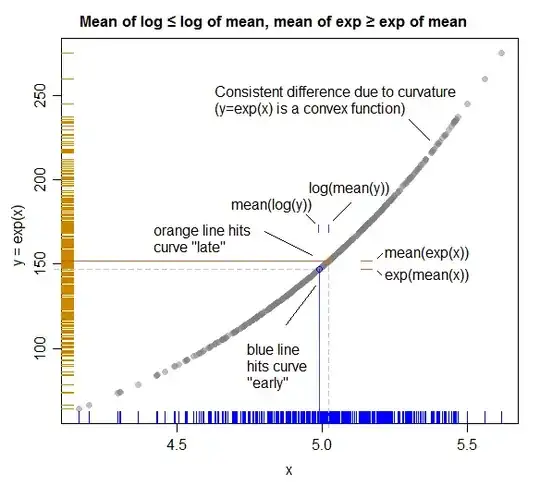I am running a multiple regression with a continuous DV and a mix of dichotomous and continuous IVs (but mostly dichotomous). This is the ZRESID vs ZPRED scatterplot, and I think there is heteroscedasticity but i'm not sure if some of the patterns is due to the binary IVs? Any help would be much appreciated.
Asked
Active
Viewed 35 times
1
Fiona Kennedy
- 11
- 1
-
Standardization here, as often, just takes you one step further away from the data and makes it more difficult to follow what is going on. But from the underlying recipe, residual $=$ observed $-$ predicted, it follows that all data points with the same CONSTANT observed outcome lie on a straight line residual $=$ CONSTANT $-$ predicted, i.e. with negative slope. One such is obvious here as an upper bound to the plot. – Nick Cox Feb 18 '22 at 09:52
-
I am led to suspect that you have an upper value often observed in practice and that you dealt with left skew by using some _ad hoc_ transformation. If you had say an outcome varying between zero or very small and a maximum, it's best to use regression aimed at fractional or bounded outcomes. I have not used SPSS for many years but I think I've seen that it offers some rather unusual transformations that in my view are hard to defend. In short, part of your puzzlement arises, I guess, from having a bounded outcome variable. (Regarding the outcome as continuous does not solve this at all.) – Nick Cox Feb 18 '22 at 09:53
1 Answers
0
At present your plot suffers from significant overplotting, which makes it impossible to see how much data is in the blob and lines appearing in the plot. So before you do anything else you should fix your plot by using transparency for the points, so the viewer can judge the volume of data in the different parts of the plot.
Even once you have done that, it can be quite difficult to judge homo/heteroskedasticity from the standard residual plot. It is more usual to construct a scale-location plot of the residuals for this purpose, since it is easier to see changes in variance by looking at the root-absolute residuals (see this related question).
Ben
- 91,027
- 3
- 150
- 376